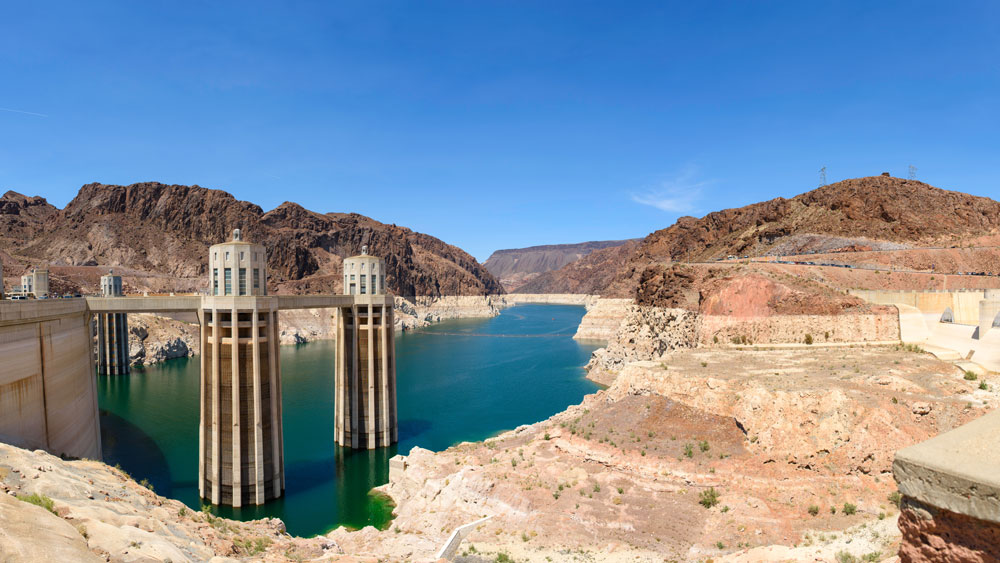A white mineral ring as tall as the Statue of Liberty creeps up the steep shoreline of Lake Mead, a Colorado River reservoir just east of Las Vegas on the Nevada-Arizona border. It is the country’s largest reservoir, and it’s draining rapidly.
With much of the country experiencing above-normal temperatures, below-average rainfall and a changing climate, it is vital that water management decision-makers have accurate information.
Led by Dr. Huilin Gao, associate professor in the Zachry Department of Civil and Environmental Engineering at Texas A&M University, researchers created the global lake evaporation volume (GLEV) dataset. It leverages modeling and remote sensing to provide the first long-term monthly time series for 1.42 million individual natural lakes and artificial reservoirs worldwide.
The researchers published their findings in Nature Communications.
About 87% of fresh surface water in liquid form is stored in natural and artificial lakes (i.e., reservoirs). While the evaporation volume from these global lakes is substantial, little is known about its spatial distribution and its long-term trend.
From 1985 to 2018, researchers discovered that long-term average lake evaporation volume has increased at a rate of 3.12 cubic kilometers per year. The trend attributions include an increased evaporation rate of 58%, decreased lake ice coverage of 23% and increased lake surface area of 19%.
The results from the study underline the importance of using evaporation volume (rather than evaporation rate) as the primary index for assessing climatic impacts on lake systems.
“We found that the long-term lake evaporation is 1500 plus or minus 150 cubic kilometers per year, which is 15.4% larger than previous estimates,” said first author Dr. Gang Zhao, a Texas A&M former student who is now a postdoctoral fellow in the Department of Global Ecology at the Carnegie Institute for Science. “This suggests that lake evaporation plays a larger role in the hydrological cycle than previously thought.”
Our findings have significant environmental, societal and economic implications as the global evaporative loss will be accelerated and further exacerbated in the future under global warming.
"With regard to evaporation loss, this study will be an invaluable venue to serve water resources researchers and decision-makers," Gao said. "Our findings have significant environmental, societal and economic implications as the global evaporative loss will be accelerated and further exacerbated in the future under global warming.
"From a global perspective, the total reservoir evaporation can be larger than the combined use of domestic and industrial water. However, even in the United States, very few lakes/reservoirs have reliable evaporation data."

"With results for individual water bodies, GLEV can really help improve reservoir management decision-making all over the world, especially under increasing drought events and population growth," Gao said. "This dataset helps the science community better understand the role that these water bodies play in Earth systems, from global weather forecasting, flood and drought modeling to Earth system modeling under climate change."
For future work, Texas A&M researchers, the Desert Research Institute and the U.S. Bureau of Reclamation recently started a nearly $1 million NASA Applied Science project that focuses on developing satellite-assisted, operational, daily reservoir evaporation monitoring and forecasts for the Western United States. The team will also expand an ongoing daily reservoir monitoring project for Texas.
Other contributors to this research are Dr. Yao Li, a postdoctoral research associate in the civil and environmental engineering department at Texas A&M and Dr. Liming Zhou, a professor in the atmospheric and environmental sciences department at The State University of New York at Albany.
This research is funded by NASA, the Department of Energy and the National Science Foundation.